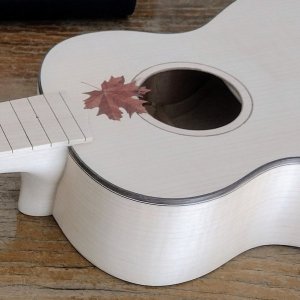newbielele
New member
- Joined
- Feb 1, 2024
- Messages
- 4
- Reaction score
- 1
Hello to everyone.
I am building a concert ukulele for my daughter. It is my first build, and I don't have any experience from any other similar job.
The ukulele is all made from maple, except an inlay on the top, cut from a reddish veneer.
Here is my question:
When sanded, this veneer produces a very red sawdast. I had in mind to use tru-oil for the finish as I read it is a relative easy and forgiving material.
In this case, if/when I sand between coats, is there a way to deal with the messy red dust and stop it from coloring the area around the inlay;
I mean in bare wood the dust fogs red the maple all around, but it can be blowned away. But after the oil coat, wouldn't the dust stick an color the top;
Thank you for your time, it is a great place you have here and I should have enter it earlier. It would have save me from a lot of mistakes and troubles...
This is the inlay:
Ps. Forgive my English, it is not my native langauge
I am building a concert ukulele for my daughter. It is my first build, and I don't have any experience from any other similar job.
The ukulele is all made from maple, except an inlay on the top, cut from a reddish veneer.
Here is my question:
When sanded, this veneer produces a very red sawdast. I had in mind to use tru-oil for the finish as I read it is a relative easy and forgiving material.
In this case, if/when I sand between coats, is there a way to deal with the messy red dust and stop it from coloring the area around the inlay;
I mean in bare wood the dust fogs red the maple all around, but it can be blowned away. But after the oil coat, wouldn't the dust stick an color the top;
Thank you for your time, it is a great place you have here and I should have enter it earlier. It would have save me from a lot of mistakes and troubles...
This is the inlay:
Ps. Forgive my English, it is not my native langauge


